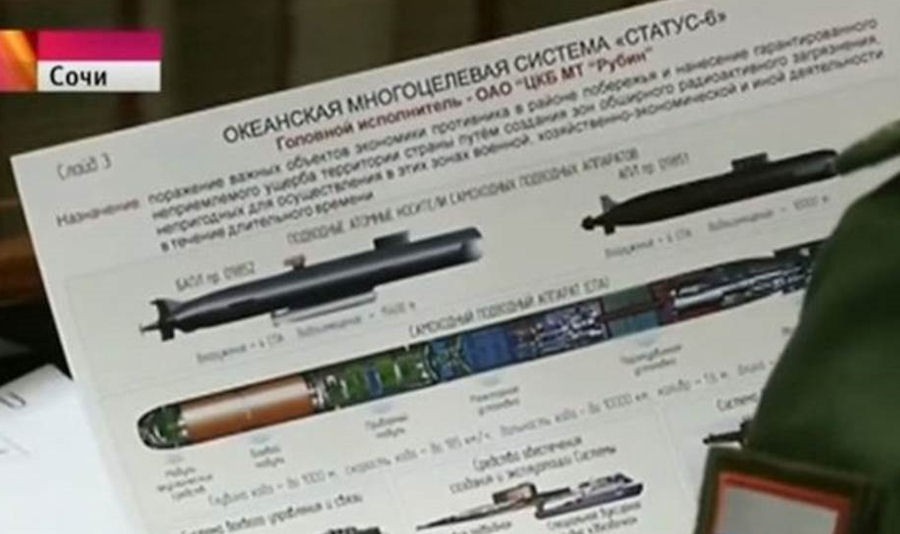Back in 2015, I blogged about a supposed new Russian underwater drone with a nuclear warhead called "Ocean Multipurpose System: Status-6". The plans for the drone were glimpsed in a Russian government video, suggesting that it was a deliberate "leak." The basic idea was that the drone was fast and fitted with stealth technology that would make it impossible to detect. It would be brought near the coast of an enemy such as the U.S. and released. The drone would proceed undetected to close to the coast and release a torpedo with a nuclear warhead. The torpedo could run right into a busy port at sixty-five miles an hour and explode, contaminating hundreds of square miles and millions of people. Recently, it has been reported that the "new" drone system may not be so new after all.
Nuclear submarines have been around for many decades. The U.S. Nautilus was launched in 1955. The Soviet Union launched the K-3 Leninskiy Komsomol in 1958. The Russians have forty-five operation nuclear submarines. So the idea of using a nuclear submarine as a delivery system for a nuclear weapon in not new.
The U.S. developed remote-controlled underwater drones in the 1960s. They were used to find shipwrecks, check underwater cables, and for a variety of other uses. Britain worked on underwater drones in the 1970s and 1980s. Today, Germany, Sweden, China, the U.S. and Russia and other countries are all developing and deploying underwater drones for a variety of purposes. Many of the drones are used for civilian application but military drones are also being developed. Once again, underwater drones are hardly new developments.
Stealth technology for use in water has been under development since the 1980s. A variety of techniques has been created that can make an underwater vessel difficult to detect by sonar. However, the new techniques are certainly not capable of rendering a drone "impossible to detect." The use of underwater stealth technologies while in constant evolution cannot be classified as a "new" technology.
Torpedoes have existed since the mid-1800s. The Russians developed a super-cavitating torpedo in the 1960s and it is still in service today. It has a special nose assembly that creates a bubble around the torpedo. This allows the rocket engine to propel the torpedo to speeds of two hundred miles per hour because the torpedo never actually touches the water. So the idea of a torpedo that travels at sixty five miles per hour being particularly fast is just absurd.
There is not a lot of information about the warhead on the drone. It could be a conventional nuclear warhead. Some say that it might be a neutron bomb that could kill millions of people. Neutron bombs have been around since the 1980s. Other reports say that a conventional explosive could be wrapped in Cobalt-60 to spread radioactive contamination over a wide area. The idea of such a "dirty bomb" has been around since the discovery of radioactive materials in the late 1800s and the understanding of the adverse effects of radiation on human health first realized in 1927. Not one of these warheads is a new concept.
While the Pentagon has stated that the Ocean Multipurpose System: Status-6 is a real Russian weapon, none of the technologies involved are new. The Russians may have combined old technologies into a new weapon that they are adding to their arsenal but any other major Western nation could easily duplicate such a weapon from well known technologies. And while underwater stealth technologies exist, they are not as perfect as implied by news stories on the Russian Ocean Multipurpose System: Status-6. Ultimately, there does not appear to be much reason for all the excited publicity about the system (including my original blog post). It is likely that the Russians allowed images of the system to "leak" specifically to alarm potential enemies.
Russian Ocean Multipurpose System: Status-6 "leaked" plans:
